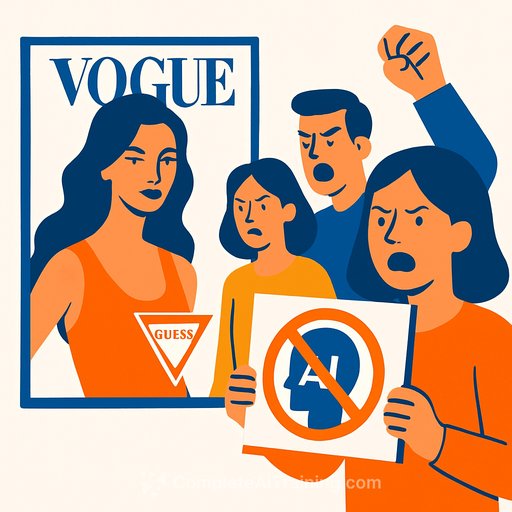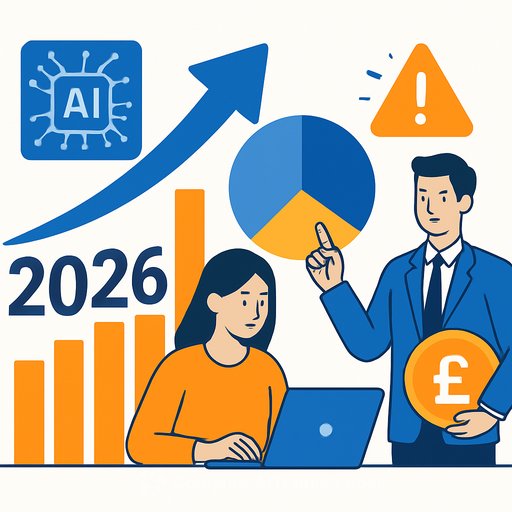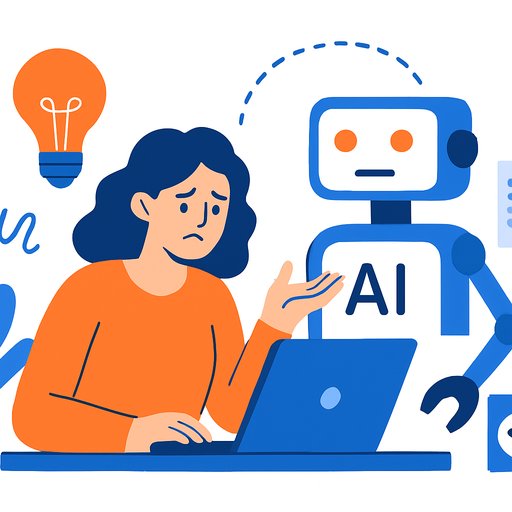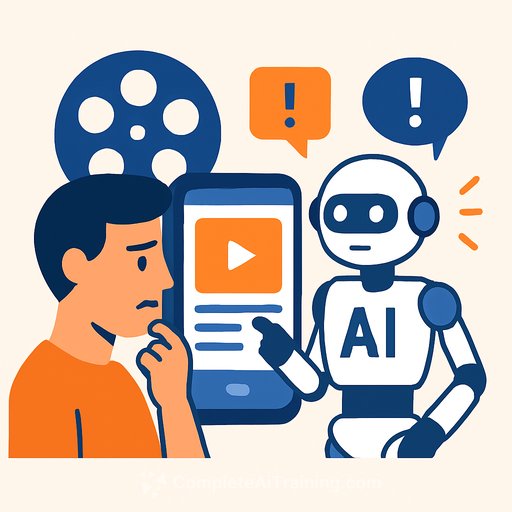Vogue US Faces Backlash Over AI-Generated Model in Guess Ad
Vogue US sparked controversy by featuring a Guess advertisement with an AI-generated model in its August 2025 issue. The campaign showed a blonde model with light eyes and full lips wearing a sky-blue top and a black-and-white patterned dress. Though Vogue included a footnote confirming the visuals were AI-created, readers and creative professionals reacted strongly against the choice.
The AI-Created Model and Industry Reaction
Social media users and content creators expressed frustration, pointing to Vogue’s history of working with legendary photographers like Irving Penn and Lee Miller. Critics argued the use of AI imagery conflicts with the magazine’s artistic roots. While Vogue clarified the ad originated from its advertising department—not editorial—many saw this as a sign of increasing reliance on AI over human creativity in the fashion industry.
About Seraphinne Vallora and the AI Campaign
The campaign was designed by marketing agency Seraphinne Vallora, known for promoting synthetic models in outlets like Elle and Harper’s Bazaar. The agency uses digital scans to replicate real-life models and has worked with brands such as H&M, which employ AI body doubles to reduce photo shoot costs and scheduling challenges.
Despite existing U.S. laws like the “right of publicity” protecting likeness and voice, legal disputes persist. For example, Scarlett Johansson accused OpenAI of using her voice without permission, highlighting ongoing concerns about consent and intellectual property in AI-generated media.
Creative Professionals Push Back
While many creatives use AI to streamline basic tasks, this Guess campaign reignited fears that AI could replace photographers, makeup artists, stylists, and entire production teams rather than assist them. As one correspondent put it, a photoshoot involves far more than the model—it’s a collaborative effort that AI cannot replicate.
Government and Union Responses
Authorities and unions are stepping in to regulate AI’s impact on creative work. The European Union’s AI Act, effective from 2024 and rolling out through 2027, requires transparency about AI-generated content and demands respect for intellectual property rights.
Similarly, the International Federation of Journalists (IFJ) published guidelines emphasizing that AI cannot replace human journalism without proper oversight. Reports from France’s INA highlight AI’s benefits in speed and translation but warn against content standardization and potential quality loss when cost-cutting takes priority.
Which Media Roles Will AI Affect Most?
A 2025 report by consulting firm BearingPoint suggests some media roles, such as documentalists, subtitlers, and motion designers, are more susceptible to automation. Meanwhile, reporters, data journalists, and community managers may evolve to oversee AI output and maintain quality control.
This indicates that while AI will reshape parts of the creative workforce, many professionals can adapt by integrating AI as a tool rather than being replaced by it. However, the backlash to Vogue’s AI-generated Guess ad reveals deep concerns about AI’s threat to creative jobs and the broader industry ecosystem.
As Condé Nast faces these challenges, it must consider clear policies for advertisers using AI content to protect the creative labor that defines its brand.
```Your membership also unlocks:






